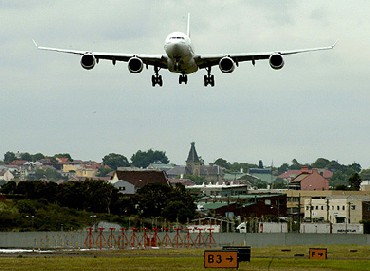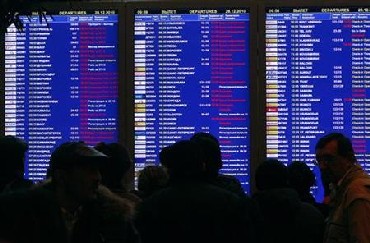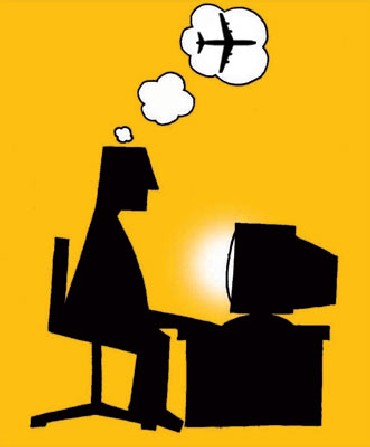 | « Back to article | Print this article |
Know about UPA ministers' travel travails
How peripatetic are ministers in the United Progressive Alliance (UPA) government? Recent reports suggest that many of them travel extensively. Not just within the country, but abroad as well.
Domestic travels do not get noticed as much as foreign visits, for obvious reasons. According to one report, ministers in UPA-II had undertaken over 460 official foreign trips in the first 18 months of its tenure and spent more than 1,800 days abroad.
On average, that is six foreign trips per minister in the span of just 18 months and close to 24 days of travel by each of them.
Click NEXT to read more...
Know about UPA ministers' travel travails
Not surprisingly, Prime Minister Manmohan Singh cracked down on such frequent foreign visits by his ministers a couple of months ago.
Austerity drive may have been the ostensible reason cited for the crackdown, but there is every reason to believe that Dr Singh's response was prompted more by the rising frequency of visits by his ministerial colleagues without any justifiable reason.
According to one newspaper report, Dr Singh shot down as many as 24 proposals from his ministers for foreign trips during the first seven months of 2011, compared to just ten similar rejections in the whole of 2010.
This was a big change. In 2009, Dr Singh rejected only one of the many proposals for foreign travel.
Click NEXT to read more...
Know about UPA ministers' travel travails
Unfortunately, information on expenses incurred by ministers on their foreign tours is not separately available. What, however, is available are data on the total expenses the government incurs on all tours by ministers.
In five years between April 1999 and March 2004, Atal Bihari Vajpayee's government spent Rs 268 crore (Rs 2.68 billion) on tour expenses of its ministers.
In the following five years, when Manmohan Singh ran the government of UPA-I, the total tour expenses of ministers more than doubled to Rs 546 crore (Rs 5.46 billion).
In retrospect, Dr Singh indeed gave relatively greater freedom to his ministers to travel extensively in the first five years of his tenure.
Even after taking into account inflation and a larger size of the council of ministers Dr Singh was saddled with, the increase is quite steep.
Click NEXT to read more...
Know about UPA ministers' travel travails
The situation changed almost dramatically when Dr Singh began his second tenure as prime minister in the UPA-II regime.
Tour expenses dropped to Rs 82 crore (Rs 820 million) in 2009-10, down from Rs 160 crore (Rs 1.6 million) in the previous year and Rs 150 crore (Rs 1.5 million) in 2007-08.
A further drop took place in 2010-11, bringing down ministers' tour expenses to Rs 62 crore (Rs 620 million).
And in the current financial year, the ministers' tour expenses are expected to be squeezed further to Rs 47 crore (Rs 470 million).
Call it the impact of austerity measures or the prime minister's decision to grant fewer approvals to requests for foreign travel by ministers. Total tour expenses in the first three years of UPA-II will now only be Rs 190 crore (Rs 1.9 million), way below what UPA-I had spent in the same period.
Click NEXT to read more...
Know about UPA ministers' travel travails
These numbers, though, may be overstating the actual squeeze on such expenses. Ministers have already begun grumbling about the cut in the funds available for their travel.
Many of them have also found innovative ways of overcoming the funds problem. Once they get the prime minister's approval, there are other ways of getting a trip financed, without straining the central exchequer.
What are the public sector undertakings for? This is also why ministries with public enterprises under their charge are always in great demand.
Once the prime minister clears the trip, the minister can summon the public sector undertaking to take care of his travel and stay.
Click NEXT to read more...
Know about UPA ministers' travel travails
This is not entirely ethical, but in the process the minister continues to travel and yet the government's budget on ministerial tour expenses is not breached.
There are now even more innovative ways to beat the government's austerity measures. Industry associations these days are too eager to take on board the minister and his team while they visit abroad to attend a conference or take part in an exhibition.
If the government does not have the money, a national-level industry association will consider spending on the minister's travel a sound investment in a relationship that would help the industry's cause in many ways.
Click NEXT to read more...
Know about UPA ministers' travel travails
However, this option is not available to all ministers. Many of them have no industry association to fall back on and hence they remain unhappy with the government's austerity measures.
What adds to their unhappiness is the realisation that while the financial allocation for their tour expenses has seen a steep drop over the last few years, the situation with regard to the Prime Minister's Office (PMO) is a little different.
The expenditure on running the PMO has been going up - from Rs 55 crore (Rs 550 million) during the five years of Mr Vajpayee's government (1999-2004) to Rs 85 crore (Rs 850 million) during UPA-I.
And in the first three years of UPA-II alone, the PMO's expenses would be close to Rs 79 crore (Rs 790 million).
It is true that the allocation for the PMO includes salaries, travel expenses and other establishment expenditure (even the expenses for the National Advisory Council are met from this head), but unhappy ministers are likely to ask why the PMO's expenditure should keep rising while their tour expenses should take the hit.







